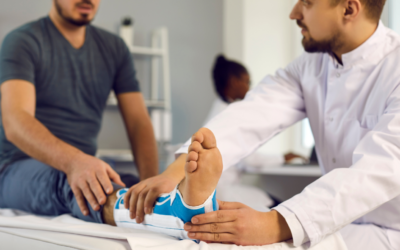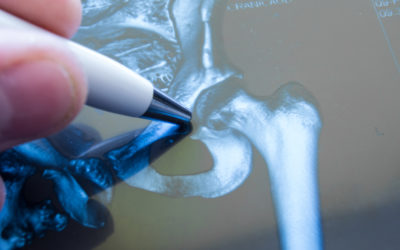Think golf isn’t dangerous? After all, it’s not like football or hockey
where high-velocity impacts are part of the game. And yet, thousands of golfers are injured every year. Just because golf is a low-impact sport doesn’t mean you can’t get injured. Fortunately, there are plenty of easy things you can do to prevent golf injuries.
Common golf injuries
Though low-impact, playing golf involves movements of the entire body, with the particular strain put on the hands, wrists, elbows, back, and neck. Though impact injuries are not a concern when playing golf, overuse injuries and sprains are very common. Tendons, ligaments, nerves, and muscles are especially vulnerable to injury while playing golf.
The most common types of golf injuries include:
- Muscle strain
- Ligament sprains
- Disc degeneration slipped discs and herniated discs
- Arthritis in the back, shoulders, arms, and hands
- Fractures in the spine from the repetitive rotating motion of the golf swing
- Rotator cuff tears, inflammation, and impingement
- Golfer’s Elbow (inflammation of the tendon on the inside of the elbow)
- Tennis Elbow (inflammation of the tendon on the outside of the elbow)
- Carpal tunnel syndrome
- Tendonitis of the wrist
Easy ways to prevent golf injuries
The best way to enjoy your time on the links is to avoid getting injured in the first place. With a few simple adjustments to your golf-day routine, you can help protect the health of your body and your swing, so you can enjoy golf for years and years to come.
- Warm-up before stepping out
Warmed-up muscles, ligaments, and tendons are more protected from the stress of repetitive motion. Before you step onto the green, warm up by stretching head to toe. Your arms, wrists, back, shoulders and legs should all be properly stretched to prevent injury. Take a walk, do some jumping jacks, or jog in place to get your heart pumping and your body warmed up before your first swing.
- Don’t push yourself
Many athletes start with the belief that if they practice constantly, they’ll improve their skills faster … until they have to deal with an overuse injury.
Listen to your body. It will usually let you know when something is “too much” long before you experience an injury. Your body needs to be conditioned to perform the movements you want it to do, which is why people train for a marathon rather than pinning on their number on day one. Golf is no different. Make progress slowly as you build strength, flexibility, and skill rather than pushing your body beyond its limits.
- Watch your posture
The proper posture for a golf swing is standing with your feet shoulder-width apart with your knees slightly bent. Your spine should be straight with your torso tilted slightly forward. The rotating motion of the swing should come from your hips, with your legs rotating as well. A proper posture while swinging can help you avoid back and neck strain.
- Embrace strength training
You don’t have to be a bodybuilder to swing a golf club, but the more strength you have, the more power you’ll transfer into the ball and the faster your drive will be. Strength training will also help build muscle mass, which prevents excess strain on your bones, ligaments, and tendons during physical activity like golf.
- Carry your clubs carefully
Golf bags are heavy. To avoid straining your neck, back and shoulders, always lift with your legs, not your back, and go slowly when picking up your golf bag. Snatching a heavy bag off the ground or out of the trunk of your car can cause injury to your back, shoulders, and neck. If you already suffer from underlying back problems, consider purchasing a rolling golf bag.
- Avoid hitting anything other than the ball
Though your aim is always for the ball, a slight error of judgment could lead you to slam your club into the ground instead. The force of your swing coupled with a sudden stop can reverberate the energy that moves back into your body, causing injury to your hands, wrist, elbows, shoulders, and back. Take extra time to accurately aim your swing. You’ll play better, and you’ll avoid injury, too.
- Perfect your swing
Swinging your club with a lot of force just isn’t necessary to playing well. Over-swinging can lead to stress on your shoulders, back, and elbows and could potentially cause injury.
Instead, focus on smooth movement and transference of energy from one muscle group to the next during your swing. When swinging a golf club, the movement uses your entire body, from your ankles to your wrists. Work to perfect a swing that puts the right amount of pressure on each muscle group without overextending the capabilities of any single part of your body. If you find yourself sore in the same part of your body every time you play golf, an improper swing may be the problem.
- Focus on flexibility
Maintaining flexibility helps you perform movements such as a golf swing better and with less risk of injury to ligaments, tendons, joints, and muscles. Though most people become less flexible with age, there are easy ways to increase your flexibility. If you would describe your body as feeling “stiff” regularly, you are probably lacking flexibility. Talk to your doctor or fitness trainer about working stretching exercises into your daily routine. They’re typically easy to do and don’t take up much time, but they can go a long way toward improving your overall health and preventing injuries on the golf course.
- Wear cleats
Golf shoes with cleats help your feet stay firmly planted while you’re swinging, which reduces pressure on your knees and can prevent knee injury.
- Stay safe outside
Being outside in the sun all day is a great way to relax and get some fresh air, but know your limits. Make sure to stay well hydrated, and wear sunscreen and sunglasses. Take breaks in the shade to avoid heatstroke, a serious illness caused by overexposure to heat, which raises your body temperature to dangerous levels.




